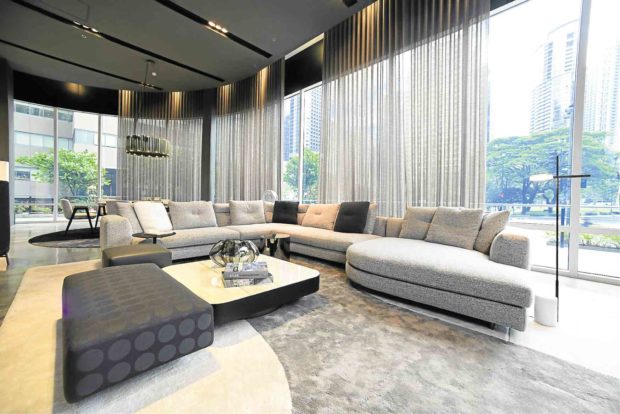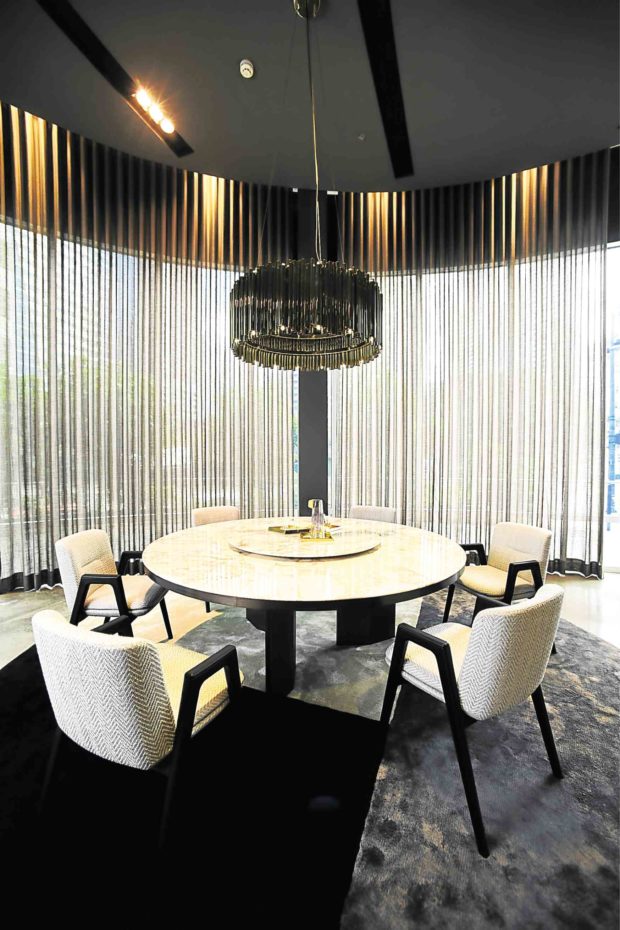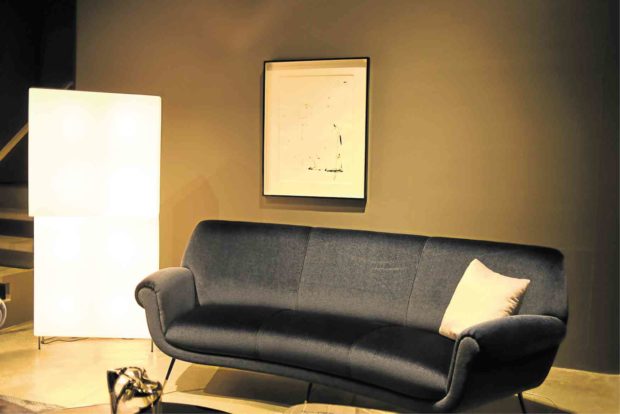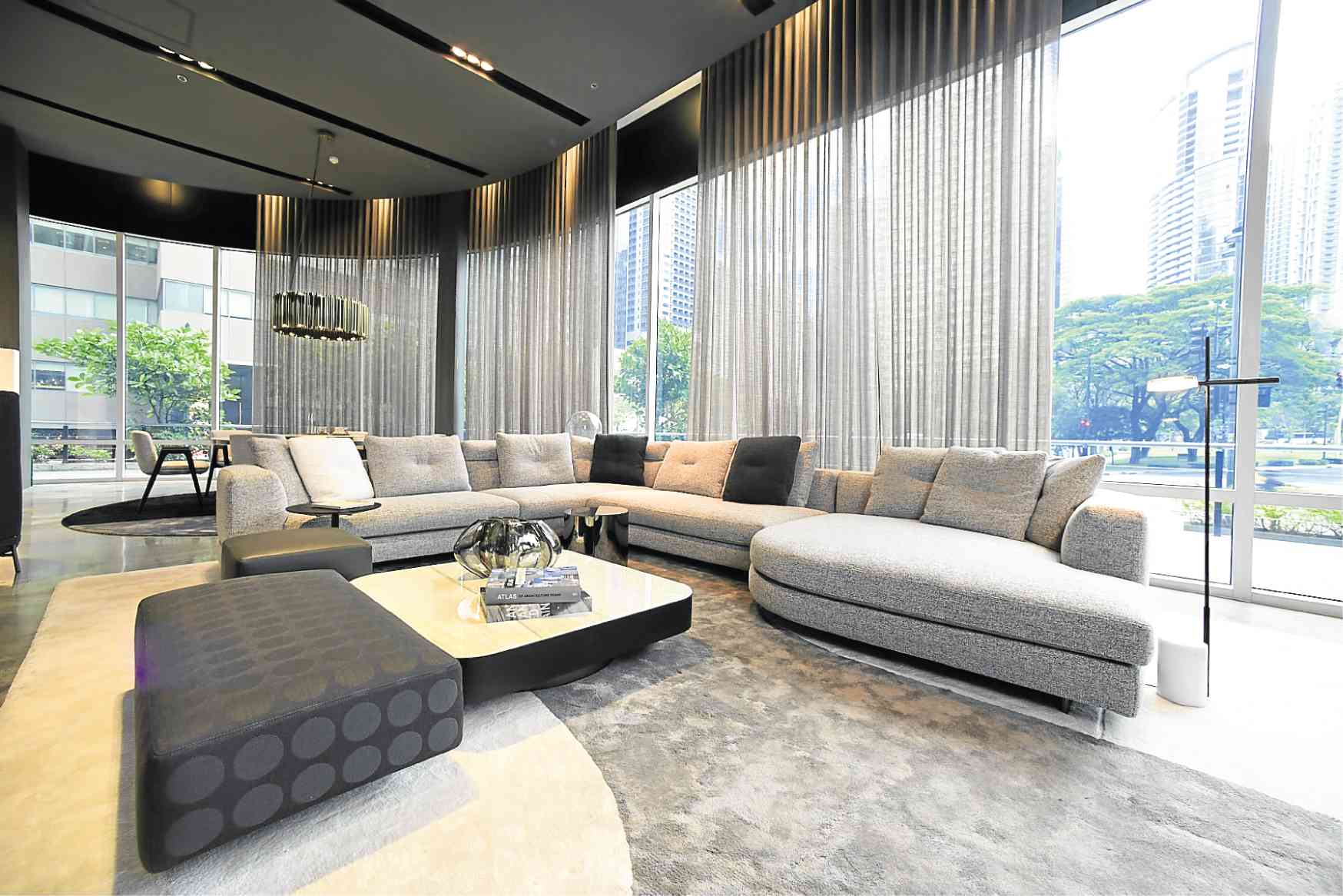
If local retailer Ferdinand Ong asked other Italian furniture companies to produce a Lazy Susan—a table with a rotating tray—for his clients, they would wince. But not his principals, Minotti, the company famous for its progressive craftsmanship, advanced technology and timeless and elegant designs.
Minotti has acceded to the demands of the Philippine market—in high style.
Not to compromise on design, Minotti uses calacatta marble, a rare marble known for its crisp white background with dramatic veins of gray and hints of gold. Ong’s clients don’t blink at the P3.6 million price for that Lazy Susan.
When Minotti asked Ong, the exclusive distributor, what the market needed, he cited a desk, since people wanted an ergonomic table for their laptops. The Italian company has since been presenting worktables for the home at the Milan Furniture Fair, one of the world’s largest design exhibitions.

Ong said his customers were intimidated by the proportions of the furniture. Adjusting to the shorter proportions of Asians, Minotti added 6 centimeters of height to the sofas so it’s more comfortable for the backs of older customers since they can easily get up from the sofas.
“The design has to be senior-friendly,” he said.
Steady growth
This is why Minotti’s business in the Philippines has been growing steadily in the past 16 years. Aside from function, beauty and its being a status symbol, the Italian manufacturer listens to customers.
“They always ask for our inputs,” said Ong.

The Italian company celebrates its 70th anniversary this year by showcasing a global design perspective with its collaborations. Nendo, the Japanese studio, is famous for its spare but warm and poetic aesthetic and little surprise elements.
French designer Christophe Delcourt’s pieces focus on furniture pieces that revolve around mobility and lifestyle.
Brazilian architect Marcio Kogan’s modular outdoor furniture system is shaped by his architectural sensibilities in the use of volume for visual impact, and traditional materials.
As homage to the founders, Albert and Ile Minotti, the company reissued the Albert & Ile seaters, originally designed by architect Gigi Radice in the mid-20th century.
The Albert sofa and the Ile armchairs reflect the mid-century look of rounded profiles, simple lines, tapered legs, wood, bold colors and rich texture with the use of mohair wool velvet upholstery.

Scientific
Minotti’s styles are elegant and understated yet difficult to copy by competitors because of its scientific use of materials and superior and fastidious workmanship. The furniture designs address environmental and social concerns and explore the realities of modern life.
The common thread among all the designers, starting with design director Rodolfo Dordoni, is how the major furniture pieces are comprised of several parts that can be changed and shifted, according to how the users move around the space.
Delcourt’s seating system, Granville, consists of islands of seats and movable backrests and armrests.
In an interview, he said, “I like being able to accommodate the need for mobility: You can place objects in front of the sofa or use smaller items and build them up or break them down.”
Delcourt emphasizes comfort and softness, lightness and airiness—hence, the feathered cushions. Still, he favors a design with volume that seems to float in space.
Ong said women need not fear that their skirts would hike up because of the deep seats of the sofa. Delcourt created versatile and curvy arm- and backrests where people can lean on the shallow edge. The backrest can be placed in the middle of the island so that users can sit in different directions.
Like human beings, the elements interact with each other, thus making the design landscape come alive.
Likewise, Dordoni’s Alexander seating system can be rearranged so that users can face each other.

“The new sets are more complicated. You can add an arc, put a high back or low back which conforms to your preference,” said Ong.
Kogan’s outdoor system, Quadrado, consists of raised teak squares with padded cushions and backrests and a matching platform with trays and candleholders. They can also be reconfigured and interlocked, according to the users.
Nendo’s Tape chairs display unpredictable variations in shape and style. Instead of the conventional feet at the end of the furniture legs, the feet are placed outside of the chair’s body and held by bronze or fabric ribbons. Though they seem like a decorative detail, the feet still raise the chair off the floor. The curvy design envelops the body, creating a comfortable cocoon.
“I believe products should be simple enough for people to use without reading a thick manual,” Nendo design director Oki Sato said in an interview.
Ultimately, today’s designers aren’t looking at furniture as objects but as solutions to challenges and how design connects with people. —CONTRIBUTED









































